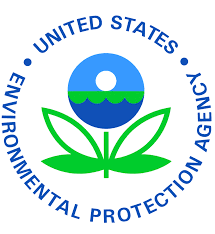Chemycal has been acquired by 3E
Learn MoreChemycal has been acquired by 3E
Learn MoreDiscover how Chemycal PRO helps you boosting your regulatory monitoring:

Upcoming Actions to Prevent Cancer Risk by Reducing Exposure to Carcinogens
Several regulatory efforts are underway to reduce unreasonable risks associated with chemicals evaluated under the Toxic Substances Control Act (TSCA) with cancer risks, including:
(*) Trichlorethylene (TCE) which is used as a refrigerant and degreasing solvent for metal equipment (Proposed rule estimated to be published fall 2023); and
(*) 1-Bromopropane which is used as a solvent in vapor degreasing, adhesives, and other products (Proposed rule estimated to be published fall 2023).
Recent Actions to Make Progress towards the Goals Identified by the Cancer Cabinet
(*) Perchloroethylene (PCE) – On June 16, 2023, EPA proposed to prohibit most uses of PCE and establish a workplace chemical protection program for uses not prohibited to protect workers through measures to prevent inhalation and skin exposure. This proposal is available for public comment through August 29, 2023. Exposures to PCE have the potential to cause liver, kidney, brain, and testicular cancer.
(*) Methylene Chloride – On April 20, 2023, EPA proposed to prohibit methylene chloride in consumer products and to establish workplace protections under TSCA. Exposure to methylene chloride is likely to cause liver and lung cancer. Workplace exposure limits would allow the safely continued processing of methylene chloride to produce chemicals that are important in efforts to reduce global warming outlined in the American Innovation and Manufacturing Act.
(*) Proposal to Strengthen Standards for Synthetic Organic Chemical Plants and Polymers and Resins Plants – On April 6, 2023, EPA announced a proposal to significantly reduce emissions of toxic and other harmful air pollution from chemical plants, including the highly toxic chemicals ethylene oxide (EtO) and chloroprene. The reductions would cut more than 6,000 tons of toxic air pollution a year and dramatically reduce the number of people with elevated air toxics-related cancer risks in communities surrounding the plants that use those two chemicals, including in many communities historically overburdened by air toxics pollution. EPA has conducted extensive outreach to provide risk information on EtO, particularly in affected communities.
(*) Proposed PFAS National Primary Drinking water'>Water Regulation (NPDWR) – On March 14, 2023, EPA announced the proposed NPDWR that would establish legally enforceable levels (called Maximum Contaminant Levels (MCLs)) for six PFAS in drinking water. Perfluorooctanoic acid (PFOA) and perfluorooctanesulfonic acid (PFOS) are classified are carcinogens, with proposed MCL Goals (MCLGs) of zero.
(*) Proposed Designation of Perfluorooctanoic Acid (PFOA) and Perfluorooctanesulfonic Acid (PFOS) as Comprehensive Environmental Response, Compensation, and Liability Act (CERCLA) Hazardous Substances – On September 6, 2022, EPA proposed to designate two PFAS (PFOA and PFOS), including their salts and structural isomers, as hazardous substances under CERCLA. This proposed rulemaking would increase transparency around releases of these harmful chemicals and help to hold polluters accountable for cleaning up their contamination.
(*) Initiation of Two Rulemaking Efforts Under the Resource Conservation and Recovery Act (RCRA) – In October 2021, EPA announced important steps toward evaluating the existing data for four PFAS under RCRA and strengthening the ability to clean up PFAS contamination across the country through the RCRA corrective action process.
(*) Advanced Notice of Proposed Rulemaking (ANPRM) on Potential Future Designations of PFAS as CERCLA Hazardous Substances – On September 22, 2022, EPA issued an ANPRM asking the public for input regarding potential future designations of additional PFAS under CERCLA.
2013 © MyChemicalMonitoring. ALL Rights Reserved. About Us | Terms and Conditions